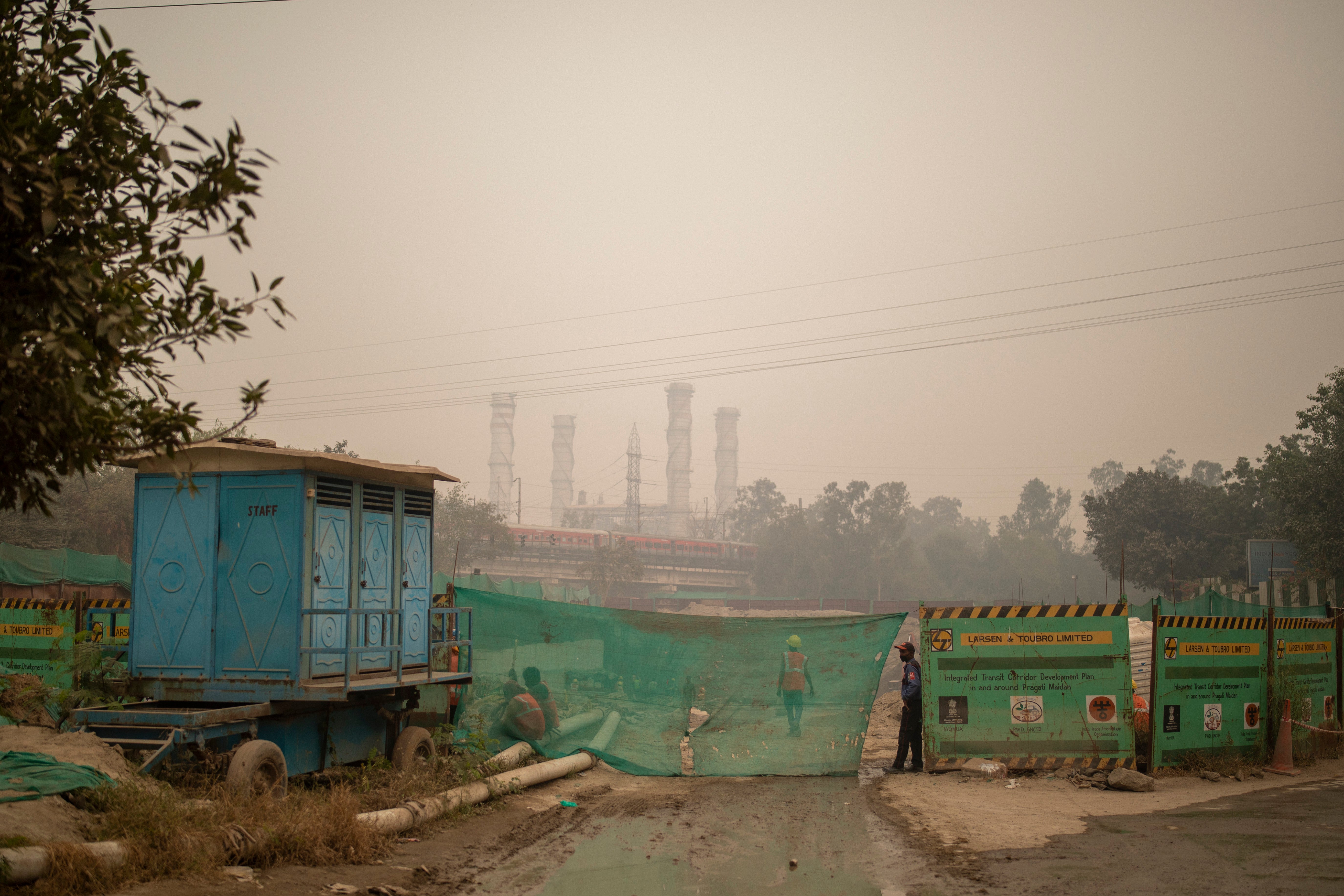In India, polluted air spells trouble for virus patients
A thick quilt of smog is lingering over India's capital and health experts say it could worsen the city’s fight against the coronavirus

Your support helps us to tell the story
From reproductive rights to climate change to Big Tech, The Independent is on the ground when the story is developing. Whether it's investigating the financials of Elon Musk's pro-Trump PAC or producing our latest documentary, 'The A Word', which shines a light on the American women fighting for reproductive rights, we know how important it is to parse out the facts from the messaging.
At such a critical moment in US history, we need reporters on the ground. Your donation allows us to keep sending journalists to speak to both sides of the story.
The Independent is trusted by Americans across the entire political spectrum. And unlike many other quality news outlets, we choose not to lock Americans out of our reporting and analysis with paywalls. We believe quality journalism should be available to everyone, paid for by those who can afford it.
Your support makes all the difference.A thick quilt of smog lingered over the Indian capital and its suburbs on Friday, fed by smoke from raging agricultural fires that health experts worry could worsen the city’s fight against the coronavirus.
Air pollution in parts of New Delhi have climbed to levels around nine times what the World Health Organization considers safe, turning grey winter skies into a putrid yellow and shrouding national monuments. Levels of the most dangerous particles, called PM 2.5, climbed to around 250 micrograms per cubic meter, which is considered hazardous to breathe, according to the state-run System of Air Quality Weather Forecasting and Research.
The throat-burning smoke regularly turns the city of 20 million people into the world’s most polluted at this time of the year.
This year's haze, however, comes as New Delhi battles a new surge in coronavirus infections, and health experts fear that if the air quality continues to worsen, then people with chronic medical conditions could become more vulnerable.
“We are already registering more infections after the air quality started to deteriorate. I fear things will only get worse from here on,” said Arvind Kumar, a chest surgeon in New Delhi.
India has reported the second most coronavirus infections in the world after the United States, with more than 8.4 million confirmed cases and nearly 125,000 deaths. The number of new daily infections reported across the country has slowed since mid-September, but New Delhi has recently seen a new surge.
On Thursday, the national capital recorded nearly 6,700 new COVID-19 cases, the second-highest single-day spike since the pandemic began. The surge comes ahead of the country's festival season, when people normally gather in large numbers.
With fears growing about rising infections, New Delhi chief minister Arvind Kejriwal on Thursday banned firecrackers from being used this month during Diwali, the Hindu festival of light.
“The corona situation is worsening because of pollution,” he said.
Xiao Wu, a researcher at Harvard University, said emerging research suggests that pollution exposure could increase the severity of coronavirus infections.
“The relationship of long-term air pollution and COVID-19 indicate adverse health impacts that make people prone to the infection,” Wu said.
He said extended exposure to severely polluted air can cause chronic lung inflammation which could leave people more vulnerable to the coronavirus.
The link between air pollution and worsening COVID-19 cases remains mostly theoretical at the moment. But several researchers have said that in addition to factors such as mask wearing, social distancing, population density and temperature, dirty air should also be considered a key element in coronavirus outbreaks.
Recently, India's National Centre for Disease Control said New Delhi is likely to report around 15,000 new COVID-19 cases a day in the winter, in part because of the prevalence of respiratory illnesses during the season resulting from toxic air.
New Delhi’s air pollution woes aren’t new.
Every winter season, air pollution levels in the capital soar to dangerous levels and dark yellow haze blankets the city for months. What makes things worse is the burning of crop debris on farms in neighboring states, which sends up huge clouds of smoke that drift toward New Delhi.
The New Delhi government has been doing more this year to fight air pollution by setting up a war room to track hot spots, using huge anti-smog guns that spray high pressure mist to help dust particles settle, and reducing smoke caused by agricultural burning.
But many say it is not doing enough.
“Our government only wakes up at the time of emergency. We don't want a quick-fix solution,” said Bhavreen Kandhari, a New Delhi environmentalist.